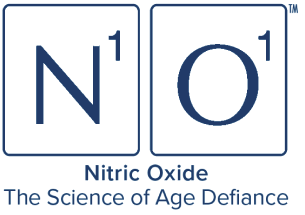SCIENTISTS DISCOVER MOLECULE THAT CONTRIBUTES TO AGING

“Nobel Prize Awarded to Scientists for Nitric Oxide Discoveries”. Those were the headlines on October 12, 1998. Robert F. Furchgott, Louis J. Ignarro, and Ferid Murad were awarded the Nobel Prize for their discoveries concerning “nitric oxide as a signaling molecule in the cardiovascular system”. Nitric oxide (NO) is a gas that transmits signals in the organism. “Signal transmission by a gas that is produced by one cell, penetrates through membranes and regulates the function of another cell represents an entirely new principle for signaling in biological systems”, as quoted by the Nobel Committee.
Nitric oxide was named “Molecule of the Year” in 1992 by the journal Science, but it took another 6 years for those responsible for the major discoveries surrounding it to win the Nobel Prize.
The discovery of nitric oxide’s signaling role in the cardiovascular and nervous systems is now nearly 40 years old, but its commercial use is only beginning. Dr. Furchgott, a distinguished professor of pharmacology at the State University of New York (SUNY) at Brooklyn, began the studies that led to the identification of nitric oxide as a biological agent in 1980. In his discoveries, he concluded that endothelial cells produce an unknown signal molecule that makes vascular smooth muscle cells relax. He called the signal molecule EDRF or endothelium-derived relaxing factor. In unrelated experiments, Dr. Murad was analyzing how nitroglycerin works. In 1977, while at the University of Virginia, he found that these drugs release nitric oxide, which relaxes smooth muscle cells, resulting in vasodilation. Dr. Ignarro through a series of analyses concluded in 1986 that EDRF was identical to nitric oxide.
What the Nobel prize recognized was the scientists’ dogged efforts to prove that nitric oxide could regulate so many important biological processes such as regulation of blood flow and circulation, functioning and malfunctioning of the immune system, and activation of mechanisms in the central nervous system. We know today that NO acts as a signal molecule in the nervous system, as a weapon against infections, as a regulator of blood pressure, and as a gatekeeper of blood flow to different organs. NO is present in most living creatures and made by many different types of cells.
Nitric oxide actually allows your body to do what it is designed to do. When you lose the ability to make nitric oxide, bad things happen and you age much quicker. The outward appearance of aging occurs in your skin. Pneuma Nitric Oxide provides the nitric oxide your body is missing. In other words, Pneuma Nitric Oxide has captured and harnessed the amazing benefits of this critical molecule to create a revolutionary skincare product.
